Filipino condiments add a burst of flavor and complexity to dishes, reflecting the diverse culinary heritage of the Philippines. From spicy vinegar dips to savory soy sauces and aromatic fish pastes, these condiments enhance and elevate the taste of Filipino cuisine. Anchored in a mix of indigenous ingredients and influences from centuries of trade and colonization, Filipino condiments offer a tantalizing blend of sweet, sour, salty, and spicy notes. Whether accompanying grilled meats, fried delicacies, or noodle dishes, these flavorful additions play a crucial role in defining the unique taste profile of Filipino food.
Patis

Patis is a staple condiment deeply ingrained in Filipino cuisine. Made from fermented fish, typically anchovies, it is a pungent and savory sauce that adds depth and umami flavor to dishes. The process involves layering fresh fish with salt in large vats, allowing them to ferment for several months, resulting in a dark amber liquid. Patis has a bold and distinctive aroma. Its strong flavor profile enhances a wide range of dishes, from soups and stews to stir-fries and marinades. It is often used as a base for sauces and dips, providing a complex and salty taste that balances well with other ingredients. Patis is a versatile condiment, commonly used to season traditional Filipino dishes such as adobo, sinigang, and kare-kare. Its intense flavor can also be tempered with the addition of citrus juice, vinegar, or sugar, depending on the desired taste. Despite its pungency, patis is highly valued for its ability to elevate the flavors of Filipino cuisine and is a beloved component of many Filipino households' pantry essentials.
Banana Ketchup
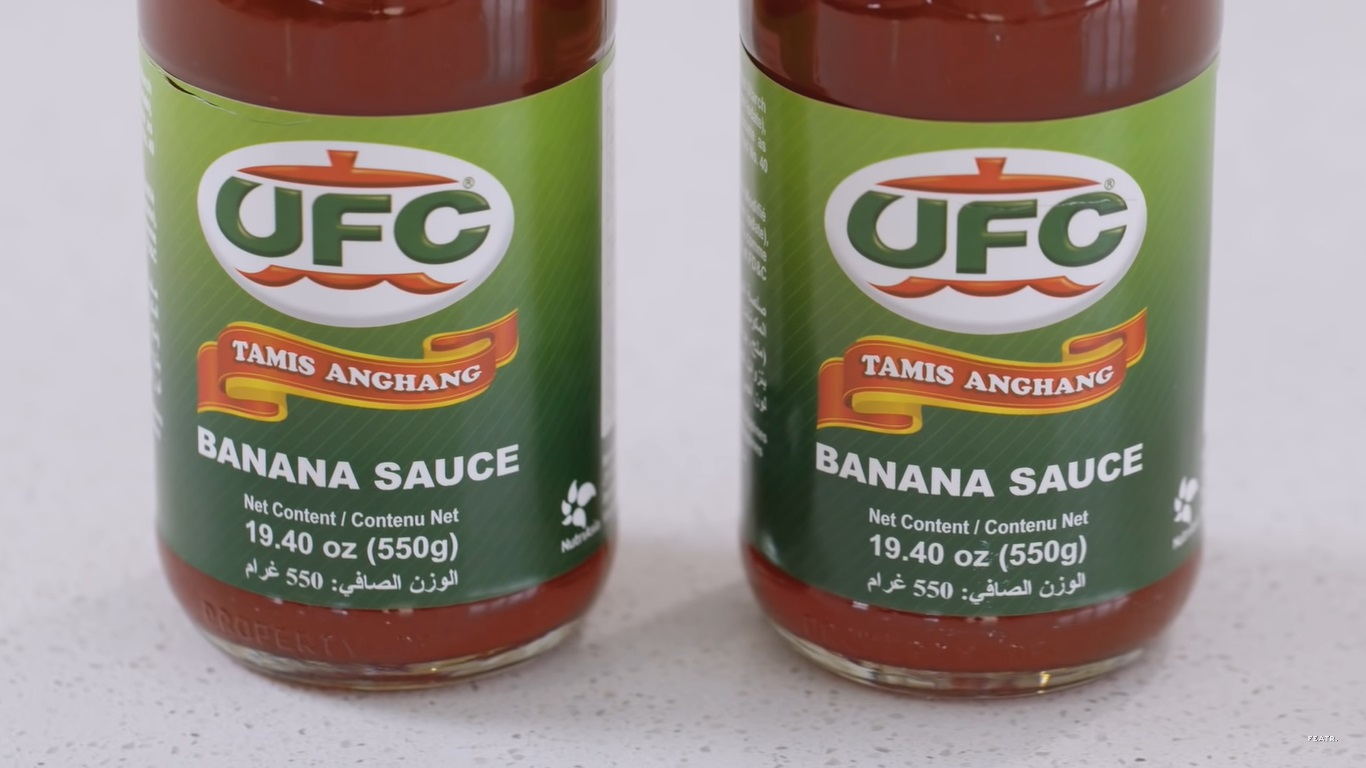
Banana ketchup is a popular condiment in the Philippines that offers a unique twist to traditional ketchup. It is made from mashed bananas, vinegar, sugar, and spices, resulting in a sweet and tangy flavor profile. The vibrant red color of this condiment is achieved by adding food coloring or tomato paste. This condiment has a rich history in the Philippines. During World War II, when tomato ketchup was scarce, Filipinos turned to bananas as a substitute. The sweet and tangy taste of banana ketchup quickly gained popularity and has become a staple in Filipino cuisine ever since. Banana ketchup is incredibly versatile and is used in a variety of Filipino dishes. It is commonly used as a dipping sauce for fried foods like french fries, fried chicken, and spring rolls. It can also be used as a marinade, glaze, or topping for grilled meats, burgers, and hotdogs. The unique combination of sweet and tangy flavors makes banana ketchup a delightful addition to any meal. It adds a burst of flavor and a touch of tropical sweetness to dishes, making it a beloved condiment in the Philippines.
Bagoong
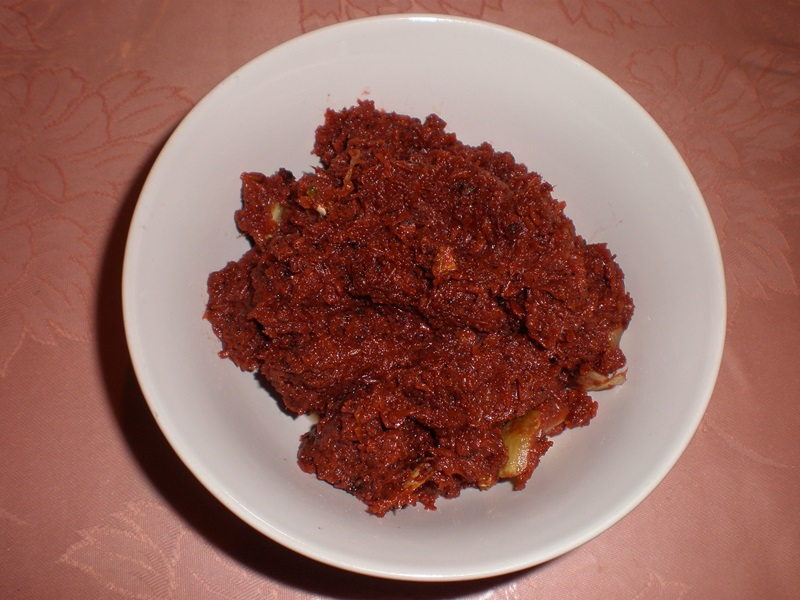
Bagoong is a popular condiment in the Philippines that is made from fermented seafood, usually either shrimp or fish. It is known for its distinct salty and savory flavor that adds a kick to various dishes. Bagoong is often used as a dipping sauce, an ingredient in cooking, or as a condiment to enhance the taste of Filipino dishes. There are different variations of bagoong across the country, each with its own unique taste and texture. Bagoong alamang, made from fermented shrimp, is commonly used in dishes like kare-kare, binagoongan, and pinakbet. It has a rich umami flavor that complements the ingredients it is paired with. On the other hand, bagoong isda, which is made from fermented fish, is commonly used in dishes like sinigang, adobo, and pancit. It has a stronger and more pungent flavor compared to bagoong alamang. Bagoong is a versatile condiment that adds depth and complexity to Filipino cuisine. Its strong and distinct taste is loved by many, making it an essential ingredient in Filipino kitchens.
Atchara
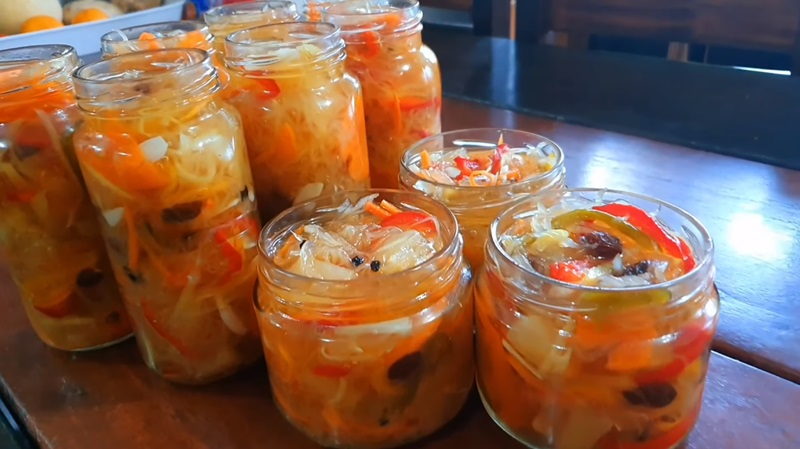
Atchara, also known as atsara, is a traditional Filipino dish that is commonly served as a condiment or side dish. It is made from pickled green papaya, carrots, bell peppers, onions, and garlic, which are usually thinly sliced or shredded. These vegetables are then marinated in a mixture of vinegar, sugar, salt, and spices such as ginger, cloves, and black peppercorns. The process of making atchara involves a method of fermentation, which gives it its distinct tangy and slightly sweet flavor. The pickling process also helps to preserve the vegetables, allowing them to be enjoyed for a longer period of time. Atchara is a versatile condiment that can be paired with a wide variety of dishes. It is commonly served alongside grilled or fried meats, as well as with rice and other Filipino delicacies. Its vibrant colors and refreshing taste make it a popular addition to many Filipino feasts and celebrations.
Liver Spread
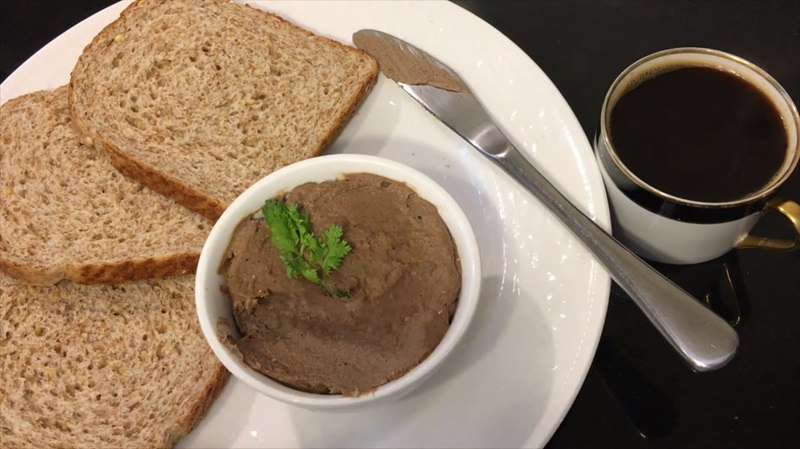
Liver spread, a savory and creamy paste made from chicken or pork liver. This delectable spread is a staple in Filipino households and can be enjoyed in a variety of ways. Liver spread is commonly used as a filling for sandwiches and as a topping for crackers or bread. Its rich and smooth texture makes it a perfect complement to the crunchiness of the bread. It can also be mixed with mayonnaise to create a delicious spread for burgers or as a dip for fries. When it comes to cooking, liver spread is a versatile ingredient. It can be added to sauces, stews, and even pasta dishes to give them a rich and meaty flavor. It is often used in traditional Filipino dishes such as menudo and afritada, adding depth and complexity to these hearty meals.
Taba ng Talangka
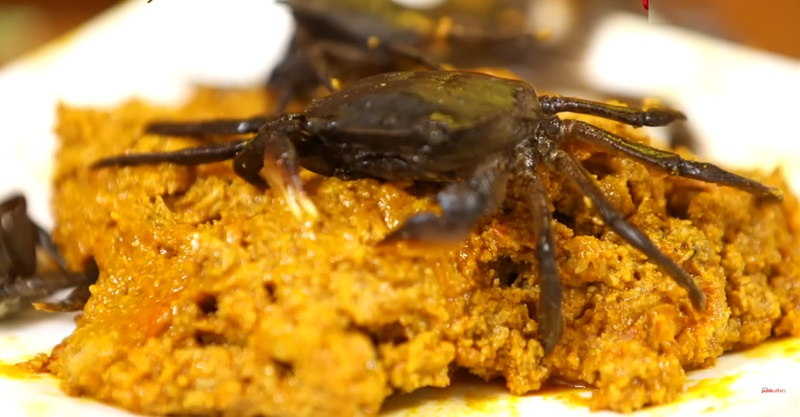
Taba ng talangka is a unique and flavorful condiment that originates from the Philippines. It is made from the roe or eggs of small crabs called talangka, which are native to the rivers and estuaries of the country. This condiment is highly prized for its rich and briny taste. To make taba ng talangka, the crab roe is carefully harvested and sautéed in garlic, onions, and oil until it reaches a smooth and creamy consistency. It is then seasoned with salt and pepper to enhance its natural flavors. The result is a thick and savory condiment that is often used as a dipping sauce or flavoring agent for various dishes. Taba ng talangka is especially popular in Philippine cuisine and is commonly eaten with steamed rice or used as a sauce for seafood dishes. Its robust flavor adds a delightful umami taste to any meal. It is also versatile and can be used as a spread for bread or as a topping for noodles.
Palapa
-1710491708.jpg)
Palapa is a traditional Filipino sauce that combines finely chopped white scallions, pounded ginger, turmeric, labuyo chili, and toasted grated coconut. It originates from the Maranao community in Lanao del Sur. These ingredients are mixed and briefly cooked or cooked until they reach a somewhat dry consistency. Once prepared, it is stored in sealed jars. Palapa is versatile, used both as an ingredient in dishes like piaparan and as a condiment after a quick sauté with condensed milk. Additionally, it can be enjoyed fresh as a salad dressing.
Latik
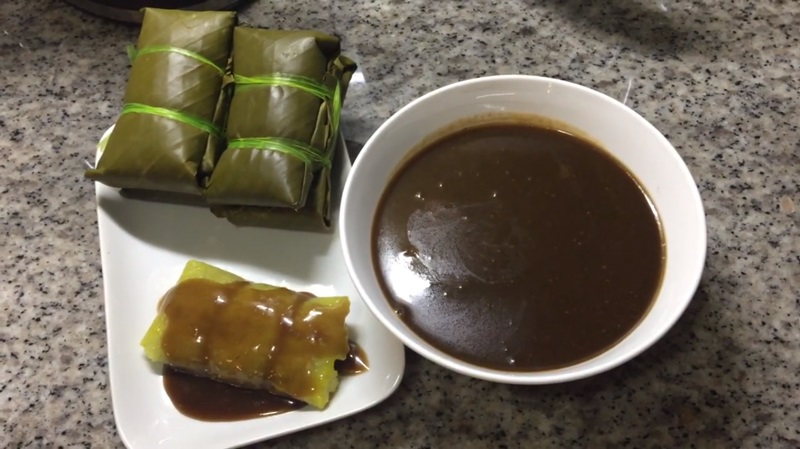
Latik is a popular condiment and ingredient in Philippine cuisine that originated from the province of Laguna. It is made from coconut milk, which is cooked until the oil separates and the coconut solids turn golden brown. The resulting mixture is then strained to separate the oil, known as coconut oil, from the coconut solids or latik. Latik is commonly used as a topping or garnish for various Filipino dishes. It adds a rich and nutty flavor that enhances the overall taste of the dish. It is often sprinkled over rice, noodles, or desserts like halo-halo, biko, or bibingka. The process of making latik involves patience and careful attention to prevent burning. The coconut milk is slowly simmered, allowing the coconut solids to caramelize and develop a deep, toasty flavor. The end result is a condiment that is both savory and sweet, with a slightly crunchy texture.
Spiced Vinegar
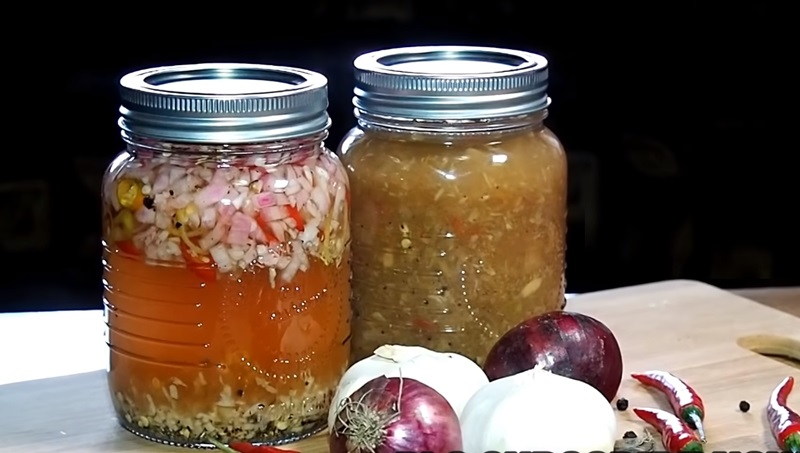
Spiced vinegar is a popular vinegar condiment in the Philippines, typically crafted from vinegar such as fermented coconut sap, infused with spices like bird's eye chili and garlic. Filipino households commonly use this flavorful condiment to enhance various dishes, especially fried foods such as lumpiang prito and lechon.
Dayok

Dayok is a traditional condiment hailing from the Visayas and Mindanao islands in the Philippines. Crafted from fish entrails, often sourced from yellowfin tuna, it excludes the heart and bile sac. The preparation involves fermentation with salt, occasionally incorporating rice wine (pangasi) and assorted herbs. This results in a potent umami-rich taste, characterized by its sharp saltiness akin to both patis (fish sauce) and bagoong.
Agre Dulce

Agre dulce is a traditional Filipino condiment that brings a unique and delightful flavor to a variety of dishes. It is a type of sweet and sour sauce that is commonly used as a dip or marinade. The name "agre dulce" literally translates to "sweet and sour" in Spanish, reflecting the influence of Spanish cuisine on Filipino cooking. Agre dulce is made by blending cornstarch with water, salt, sugar, and a tangy element such as tomato ketchup, banana ketchup, or pineapples. The mixture is heated until it reaches a boil and then simmered until it achieves a thick consistency. Optionally, labuyo chilis can be incorporated for added heat.
Toyomansi
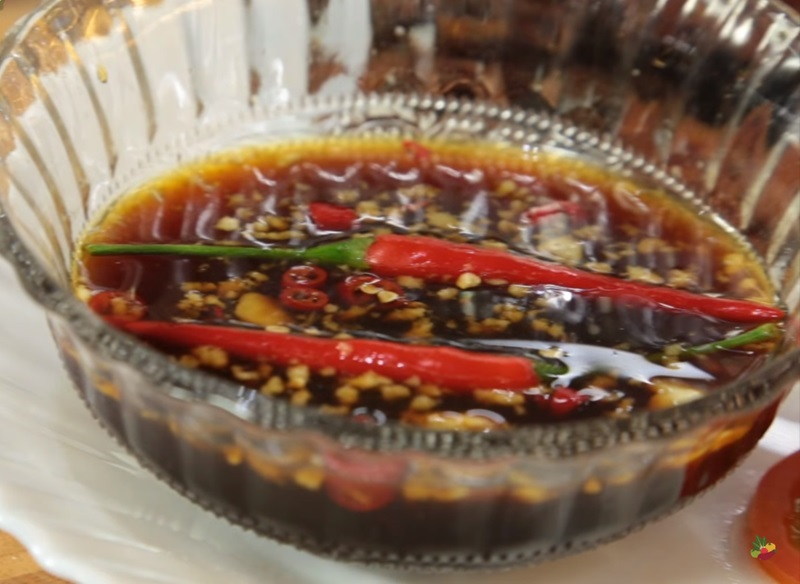
Toyomansi is a popular Philippine condiment that is widely used in various dishes. It is a simple yet flavorful combination of two key ingredients: soy sauce (toyo) and calamansi juice (mansi). To prepare Toyomansi, soy sauce is mixed with freshly squeezed calamansi juice, resulting in a tangy and savory sauce that enhances the flavor of any dish it is added to. The calamansi juice adds a refreshing citrusy note, balancing the richness of the soy sauce. This condiment is commonly used as a dipping sauce for grilled or fried meats, seafood, and even vegetables. It complements the smoky flavors of the grilled dishes and adds a zesty kick to the fried ones. Toyomansi is also used as a marinade for meats, providing them with a delicious tangy flavor. The simplicity of toyomansi makes it a versatile condiment that can be easily customized to suit individual preferences.






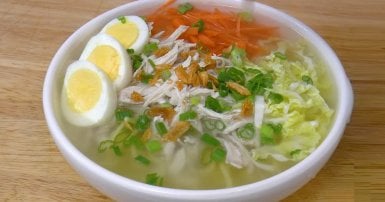

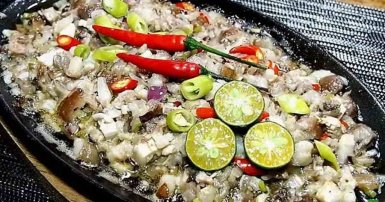


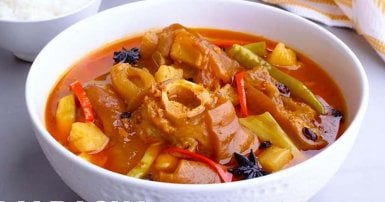

-1709813013.jpg)


